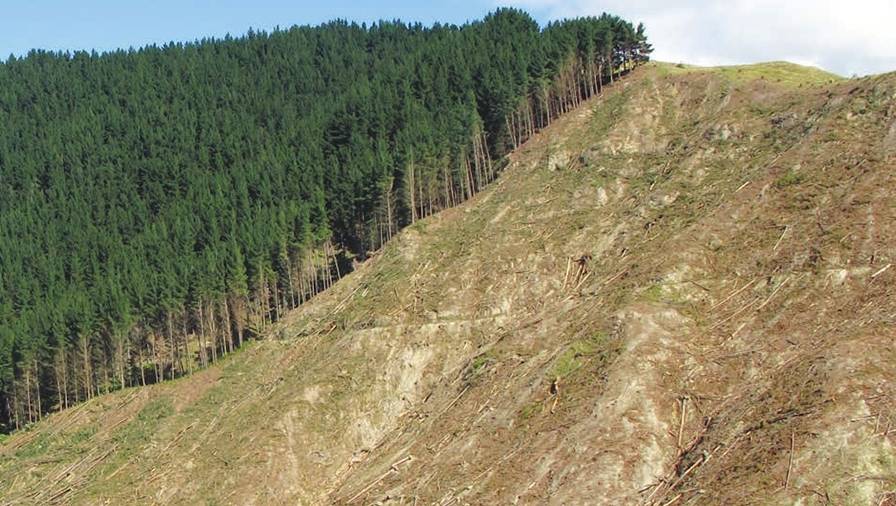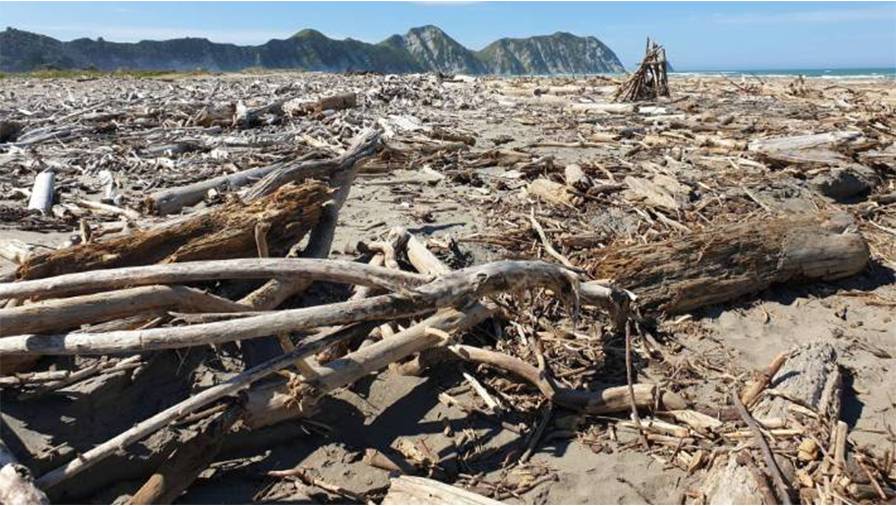Cyclones and capitalism: Does forestry deserve a future?
ANALYSIS: Tairāwhiti region described as a victim of bad decisions.
Tairāwhiti: Pine, Profit and the Cyclone, by Aaron Smale.
ANALYSIS: Tairāwhiti region described as a victim of bad decisions.
Tairāwhiti: Pine, Profit and the Cyclone, by Aaron Smale.
In the apex of journalistic roles, war and natural disasters sit at the top. By their nature, headline-grabbing incidents are short-lived. Even in long-lasting conflicts, such as today’s Gaza, Ukraine, Myanmar, and Sudan, frontline coverage can fade quickly as those high-profile journalists and media outlets move on to fresh sensations.
Of course, most journalists aren’t involved in this. They are covering more mundane events. But how do you learn about what’s going on Syria today, for example? Or the rebuild of Hawaii’s Maui Island after the fire?
The biggest stories after World War II were the economic miracles that restored Germany and Japan. Why did South Korea become an industrial juggernaut, while the North remained in socialist penury, albeit with one of the world’s largest armies?
After 1945, Africa was decolonised when many of those states had living standards above those in devastated Korea or China. Today, those roles have reversed. You won’t read or see these stories on a front page, in TV bulletins, or social media.
But they can be told in long-form articles or books. The unique BWB Texts series, which is now up to number 109, is the perfect vehicle for journalists, as well as academics and others, to cover a topical issue in its full context.
In practice, most are works of advocacy that advance so-called progressive causes. But that’s fair enough, given think tanks such as The New Zealand Initiative produce valuable research from a neoliberal or conservative point of view.

Aaron Smale.
Aaron Smale’s Tairāwhiti: Pine, Profit and the Cyclone is a post-disaster investigation framed by a Māori perspective of what the publisher calls a region, “where colonialism and environmental exploitation intersect with devastating results”.
As an adopted child, Smale did not identify as Ngāti Porou until he was 16. His career as a journalist forced him to “recover” his background, leading him back to Tairāwhiti in the wake of Cyclones Hale and Gabrielle.
His focus was on what shocked the nation: swollen rivers that delivered thousands of tonnes of forest debris down flooded valleys, eventually dumping them out to sea and the shore. This ‘slash’ was the result of clear-felling pine forests on steep, erosion-prone hillsides.
The region has three catchments that are world-beating in producing sediment from soils that are considered geologically young. Three rivers – Waiapu, Waipaoa, and Hikuwai – discharge some 55 million tonnes annually from a 1700 square kilometre catchment, compared with San Francisco Bay’s 42 million tonnes from 100,000sq/km.
The biggest two rivers account for nearly half of the North Island and a quarter of the whole country’s suspended river sediment.

The Mangatu forest in 1968.
This was not recent knowledge. New Zealand’s first government scientist, Sir James Hector, collected evidence of erosion in the 1890s, attributing it to the conversion of native forest to pastoral sheep farming. Much research has built on this, with Smale quoting extensively from it. He also interviews an acknowledged expert, Gisborne resident Mike Marden, who retired as a government geologist in 2017.
The move away from this disastrous land use did not occur until a disastrous flood in 1948. State-sponsored forestry planting of pine to combat erosion began in the 1960s at the headwaters of the Mangatu River.
The desired results happened quickly, due to pine’s rapid growing qualities, especially in the first 10 years. But government subsidies for sheep farming continued at a higher rate in the 1970s, along with incentives to clear mānuka scrub on marginal land.
Then came Cyclone Bola in March 1988, bringing a literal ‘perfect storm’ to the region’s land use practices. A positive side effect of the widespread damage was that geologists such as Marden were able to observe earth flows from 15,000 years ago.
These occur slowly but heavy storms such as Bola can trigger large-scale land movements. During Bola, for example, the Waiapu’s sediment flow in just a few days was double its annual total at an estimated 73 to 93 million tonnes. As for the slash, Marden says: “It’s the landslides not the rain that transport the woody debris into the streams.”
A perverse response from Bola was that, while sheep farming subsidies were canned by the fourth Labour Government, new funds were applied to the East Coast Forestry Project, which aimed to replant 60,000ha of eroded land. Marden recalls this target was only half completed but private investment schemes boosted the total of planted forest by 100,000ha from 1992 to 1997.
The Forest Owners Association in 2021 put the region’s total at 157,000ha, which means the bulk of it is ready for harvesting. The shipping and export figures for timber and logs are equally impressive, reaching some three million tonnes in 2019 from less than 500,000 in 2003/04.
By any stretch, it’s an industry that is too big to fail, though it’s on a precipice as Gabrielle-inspired environmental restrictions on forestry operators make future harvesting either impossible or unprofitable.

Clear felling in steep plantations.
Smale concludes the official ministerial report into the slash problem was “a catalogue of failures in decision-making across decades” and he has plenty of people prepared to tell him about them.
He also points out the plethora of government agencies with their climate change concerns, which affect forestry because of carbon credits and the Emissions Trading System.
Among the industry’s conundrums are whether to keep planting trees for the quick rewards from carbon credits, handing the environmental legacy of harvesting on steep hills to later generations; or to restrict planation forests to erosion-free land that might be better used for other purposes.
These issues are beyond any simple solutions from a government or the market. But one easy target is the existence of foreign-owned companies that allegedly send their profits overseas at the expense of the communities where they operate.

Forestry slash caused widespread problems throughout the East Coast and Hawke’s Bay following Cyclone Gabrielle in February 2023.
This is complicated by the symbiotic relationship between foreign capital and markets for the wood products, and the largely local ownership of the land. Tairāwhiti is heavily dependent on forestry for employment, and closing such an industry is not an option without a large replacement.
Smale and his sources make many valid points, but I don’t get the impression that Māori interests, Government and councils, or even big business, have a way forward.
That has left a gap for what I call Guardian journalism, which highlights the world’s woes and attributes them to any form of capitalism, private enterprise, and rich folks. A solution would mean giving up everything made from carbon to concrete. You never know of positive developments that are happening every day to make the world a better place.
Smale identifies with a community that gave lives in world conflicts for this country’s future but thinks it received little in return. He puts hope in a demographic development that will lead to a change in leadership that improves on the Anglo-Saxon culture.
He quotes local IT entrepreneur (and former NBR columnist) Barry Soutar, whose message is: “Forestry has to go. Forestry cannot be our No 1 industry … because it has been so destructive.”
These are radical and idealistic sentiments at a time when talk of freezing out foreign investors, scrapping an agrarian-based export economy, and accepting a sacrificial drop in living standards as the price of climate change are not on everyone’s agenda.
Tairāwhiti: Pine, Profit and the Cyclone, by Aaron Smale (BWB Texts).
Nevil Gibson is a former editor at large for NBR. He has contributed film and book reviews to various publications.
This is supplied content and not commissioned or paid for by NBR.
Sign up to get the latest stories and insights delivered to your inbox – free, every day.